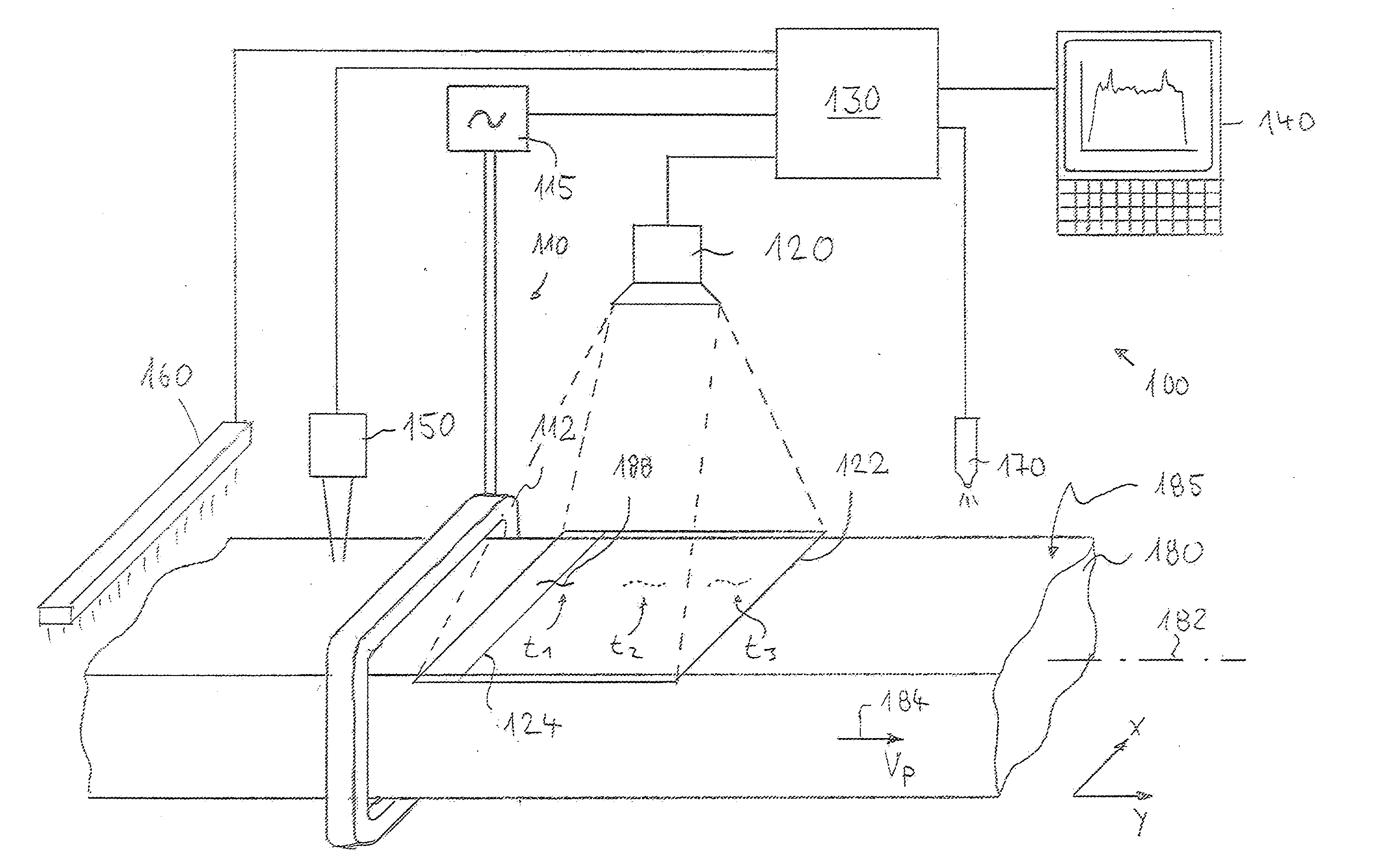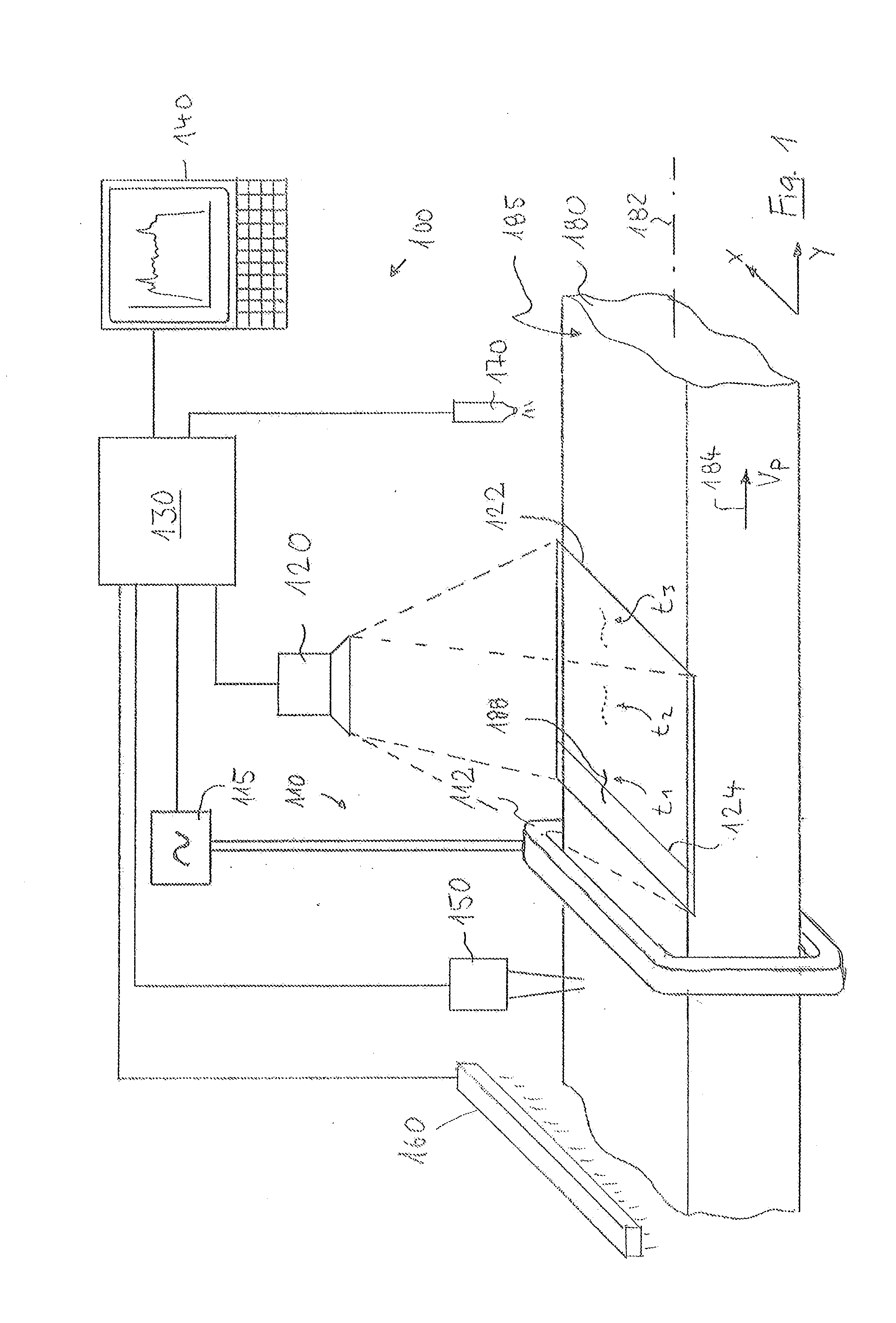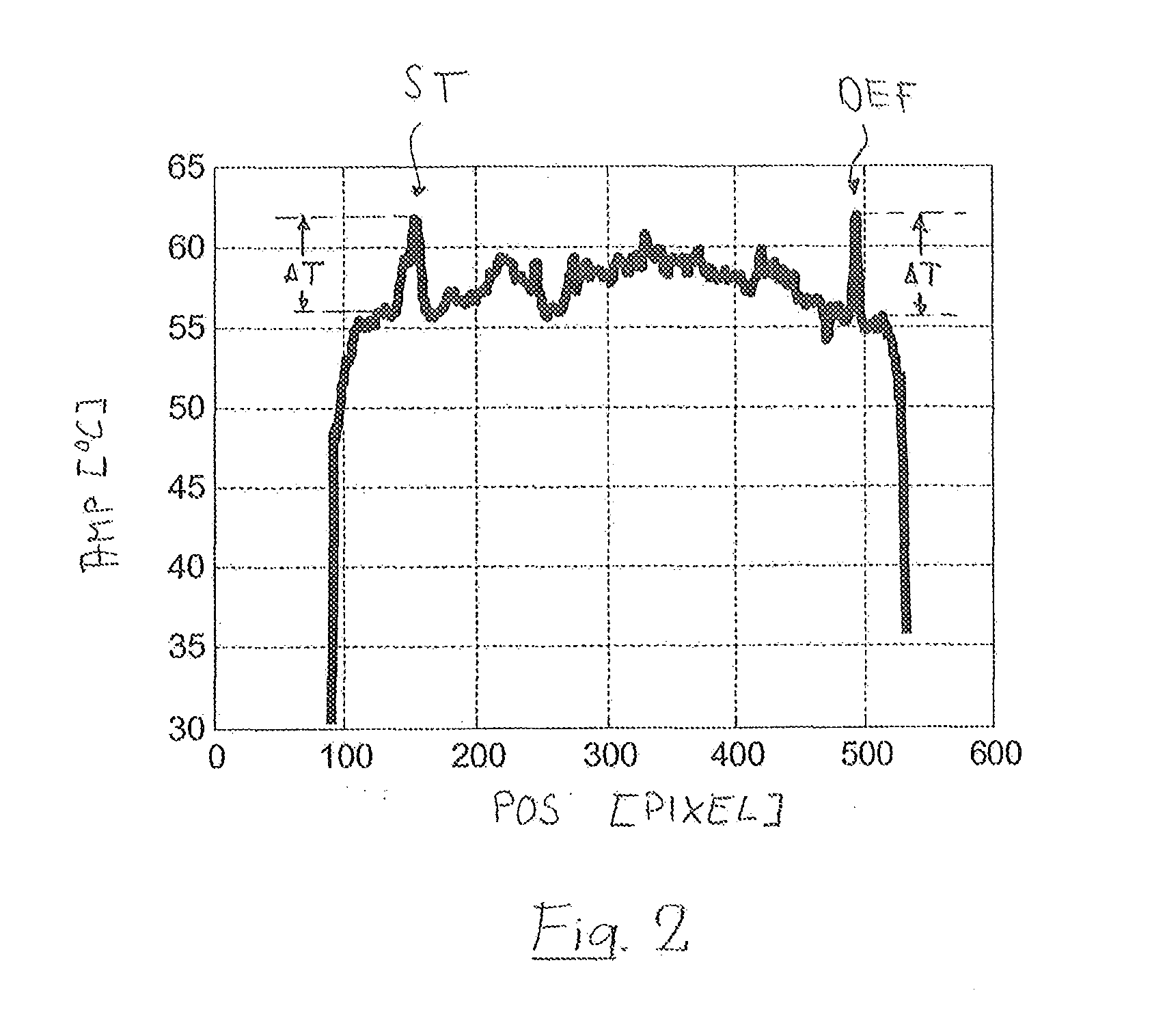Thermographic Test Method and Testing Device for Carrying Out the Test Method
a testing device and test method technology, applied in the field of thermographic testing method and testing device for carrying out the test method, can solve the problems of false classification of interference as microstructural flaws or defects, increased current density, and increased power loss
- Summary
- Abstract
- Description
- Claims
- Application Information
AI Technical Summary
Benefits of technology
Problems solved by technology
Method used
Image
Examples
Embodiment Construction
[0045]FIG. 1 shows a schematic representation of an embodiment of a thermographic testing device 100 for testing the complete surface of elongated test objects of electrically conductive material by the run-through method. In the case of the example, the test object 180 is a steel billet with a rectangular cross section, which comes from a rolling device (not represented) and is conveyed with the aid of a conveying device (not represented), for example a roller conveyor, at a largely constant running-through speed vP from the range between about 0.1 m / s and 1.5 m / s in a direction of movement 184 (arrow) extending parallel to its longitudinal axis 182. After the hot rolling, the steel billet does not have a bright surface but a so-called “black” surface, the surface temperature of which typically lies between 0° C. and 50° C. The thermographic testing and the evaluation of the thermographic data thereby recorded are explained on the basis of the testing of the macroscopically level s...
PUM
| Property | Measurement | Unit |
|---|---|---|
| temperature | aaaaa | aaaaa |
| speed | aaaaa | aaaaa |
| speed | aaaaa | aaaaa |
Abstract
Description
Claims
Application Information
 Login to View More
Login to View More - R&D
- Intellectual Property
- Life Sciences
- Materials
- Tech Scout
- Unparalleled Data Quality
- Higher Quality Content
- 60% Fewer Hallucinations
Browse by: Latest US Patents, China's latest patents, Technical Efficacy Thesaurus, Application Domain, Technology Topic, Popular Technical Reports.
© 2025 PatSnap. All rights reserved.Legal|Privacy policy|Modern Slavery Act Transparency Statement|Sitemap|About US| Contact US: help@patsnap.com



